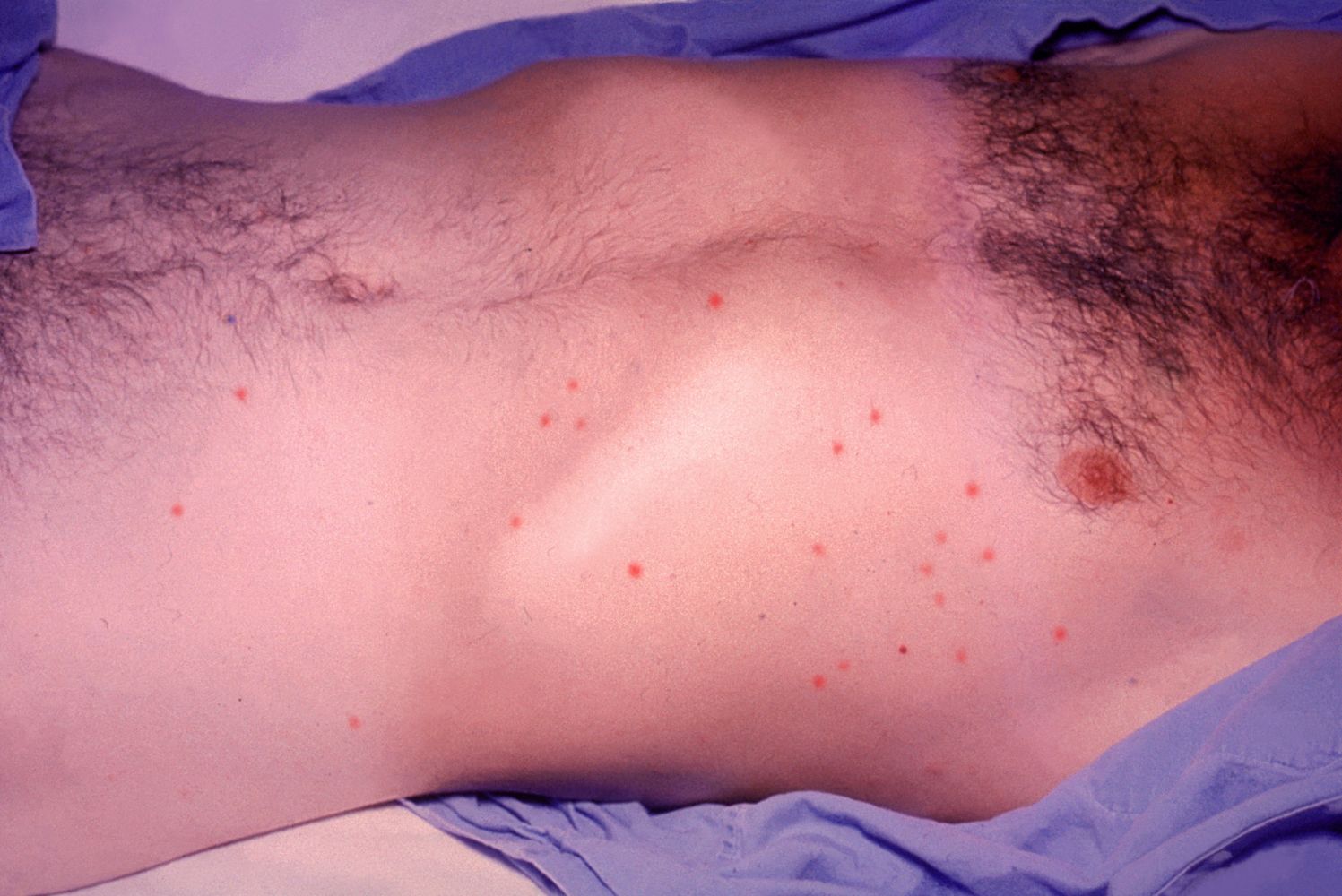Epidemiology
Etiology
- Pathogen
- Salmonella enterica serotype Typhi: typhoid fever
- Gram-negative rod
- Facultative anaerobe with peritrichous flagella
- Produces hydrogen sulfide (H2S) on TSI agar
- Oxidase-negative
- Cannot ferment lactose
- Salmonella enterica serotype Paratyphi: paratyphoid fever
- Salmonella enterica serotype Typhi: typhoid fever
- Reservoir
- Salmonella enterica serotype Typhi: humans
- Other Salmonella species: humans and animals
- Transmission: fecal-oral
Pathophysiology
Lifecycle
- Oral uptake of pathogen: A relatively large number of organisms (∼ 105) is needed to cause infection (high infective dose), unlike, e.g., in Shigella infection, where as few as ∼ 10 organisms suffice to infect the host.
- Migration into the Peyer patches of the distal ileum: If the pathogen manages to reach the distal ileum, it migrates via M cells through the epithelium and into the Peyer patches.
- Infection of macrophages → nonspecific symptoms
- Spread from macrophages to the bloodstream → septicemia → systemic disease
- Migration back to intestine → excretion in feces
Clinical features
Tip
Key features:
- “Rose spots” (faint, salmon-colored macules on the trunk and abdomen)
- Relative bradycardia (pulse-temperature dissociation), where the pulse is slower than expected for the degree of fever.
- Week 1: Insidious onset of stepwise fever (fever that climbs higher each day), malaise, headache, and myalgias.
- Week 2: High, sustained fever. Abdominal pain, “rose spots” (faint, salmon-colored maculopapular rash on the trunk) may appear. Patients may have constipation or “pea-soup” diarrhea. A key finding is relative bradycardia (Faget sign, not seen in children), where the pulse is slower than expected for the degree of fever.
- Persistent fever, but no chills; mostly unresponsive to antipyretics
- Physiologically, the heart rate increases in proportion to body temperature (for every degree Fahrenheit, the heart rate should increase ∼ 10 beats/min). In typhoid fever, this physiological response is typically reduced. Thus, the heart rate is only moderately increased despite a high fever, which is known as relative bradycardia.
- The Salmonella typhi bacteria releases endotoxins that affect the autonomic nervous system, specifically dampening the sympathetic response that would normally increase heart rate with fever.
- Week 3: Untreated patients can develop hepatosplenomegaly, intestinal bleeding, or delirium (“typhoid state”).
Complications
- GI bleeding and intestinal perforation at the site of necrosed Peyer’s patches are the most severe complications, typically occurring in the third week.
- A small percentage of individuals become chronic asymptomatic carriers, harboring S. Typhi in the gallbladder and continuing to shed the bacteria.
- Association with osteomyelitis in patients with sickle cell disease.
- Relapse can occur in about 10% of patients, usually 1-3 weeks after recovery.

Diagnostics
Pathology
The hallmark finding is the typhoid nodule, which is an aggregate of macrophages (also called “typhoid cells” or histiocytes). These nodules are found in the intestine, spleen, liver, and bone marrow.